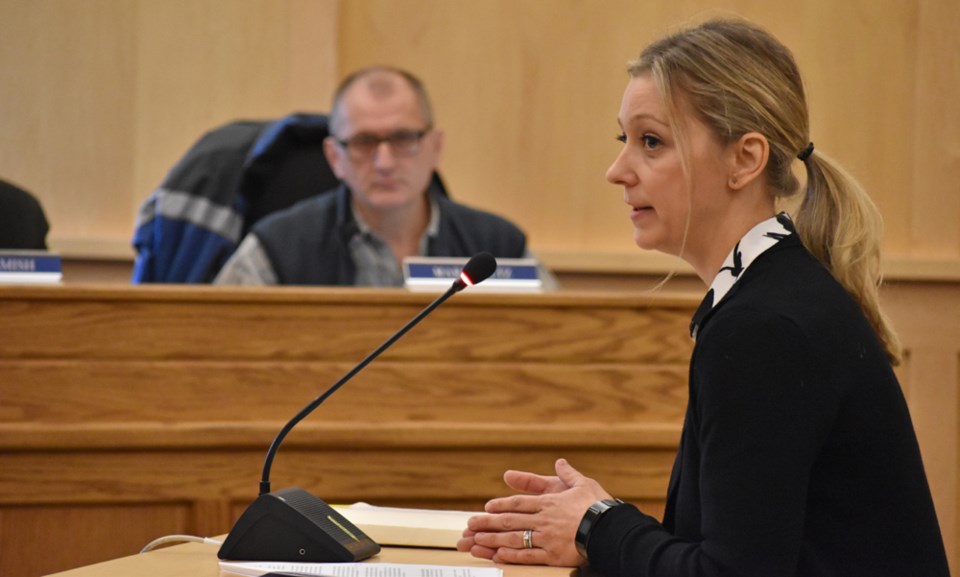Without extended ice time at the Coast’s arenas, the Sunshine Coast Skating Club’s (SCSC) athletes miss school days, can’t adhere to training guidelines and drop out of the club altogether. And the lack of extended ice time also violates Sunshine Coast Regional District (SCRD) ice allocation policies.
Those were some of the issues raised by SCSC president Andrea Watson at a Nov. 22 SCRD committee, where she urged directors to keep ice installed on at least one of the Coast’s two arenas for a minimum of 10 months. Ice is typically removed from both arenas in March and re-installed in September.
The extended ice season would see ice remain in one arena from March to the end of June and re-installed at the beginning of August.
Watson informed the new board that ice user groups have been appearing for the past decade to request year-round ice to be reinstated. The last time the Coast had extended ice was in 2008.
She said without year-round ice, the club cannot follow guidelines by Skate Canada of 46 to 52 weeks of training per year. To compensate for the loss of ice time, Watson said athletes must travel off-Coast. In 2018, this caused athletes to miss 108 hours of school instruction time from May to June. “We are doing our youth a great disservice by not affording them the same opportunities for training and progression as other communities,” she told directors.
The skating program produces provincial medalists, under the tutelage of two certified professional coaches with Olympic-level qualifications, who are paid by the club and who, said Watson, “agreed to relocate here and teach at this club” when extended ice was installed.
Minor Hockey has approximately 250 members and the Sunshine Coast Skating Club has 200 members. Watson said numbers dropped after year-round ice was removed because they couldn’t sustain the same level of competition. “We get to a certain point of rebuild, and then we lose those top skaters all over again.” She said the club has been working to increase membership and that it has doubled over the past five years “to where we were 10 years ago when we had year-round ice.”
She also claimed that elements of the SCRD’s policies around ice allocation are currently not being followed, including achieving gender equity (since figure skaters are predominantly girls and women). The policy also stipulates that arenas are operated based on user demand, and Watson said groups have repeatedly requested that spring and year-round ice is required. Another element of the policy is that in the off-season, ice is based on the demand of user groups and their ability to cover costs, which Watson said ice groups have accomplished.
She acknowledged the demand for dry floor time but suggested that dry floor groups have alternatives. “By taking two ice surfaces out to provide dry floor user groups with two additional options leaving our youth with no other option is not acceptable,” she told directors.
Following the presentation, Sechelt mayor and director Darnelda Siegers asked Watson about policy adherence. Watson replied that since she became president in 2017, she has attended numerous meetings “where we’ve asked that this policy be followed,” adding, “we’re not sure why it’s not being followed at this time.”
Roberts Creek director Andreas Tize requested that a cost-benefit analysis of proposed changes be prepared, including energy and water demands.
Gibsons mayor and director Bill Beamish said he recalled when the second arena facility was being lobbied for, “the attractiveness and opportunities for our youth was really one of our prime objectives and I really hate to see … some youth marginalized,” he said.
Lesleigh Farr, one of the coaches, told directors that one of her stipulations to move to Gibsons was to have year-round ice. “That was guaranteed and that’s why I moved.” She said she had ice for the first two years but with the building of the second rink, “things were cut in half. We were split. We lost our competitive block, our excel sport academy folded, speed skating folded – it hasn’t turned out to be a positive for ice sports.”
Staff said the report will appear before the board prior to the budget process in January.



